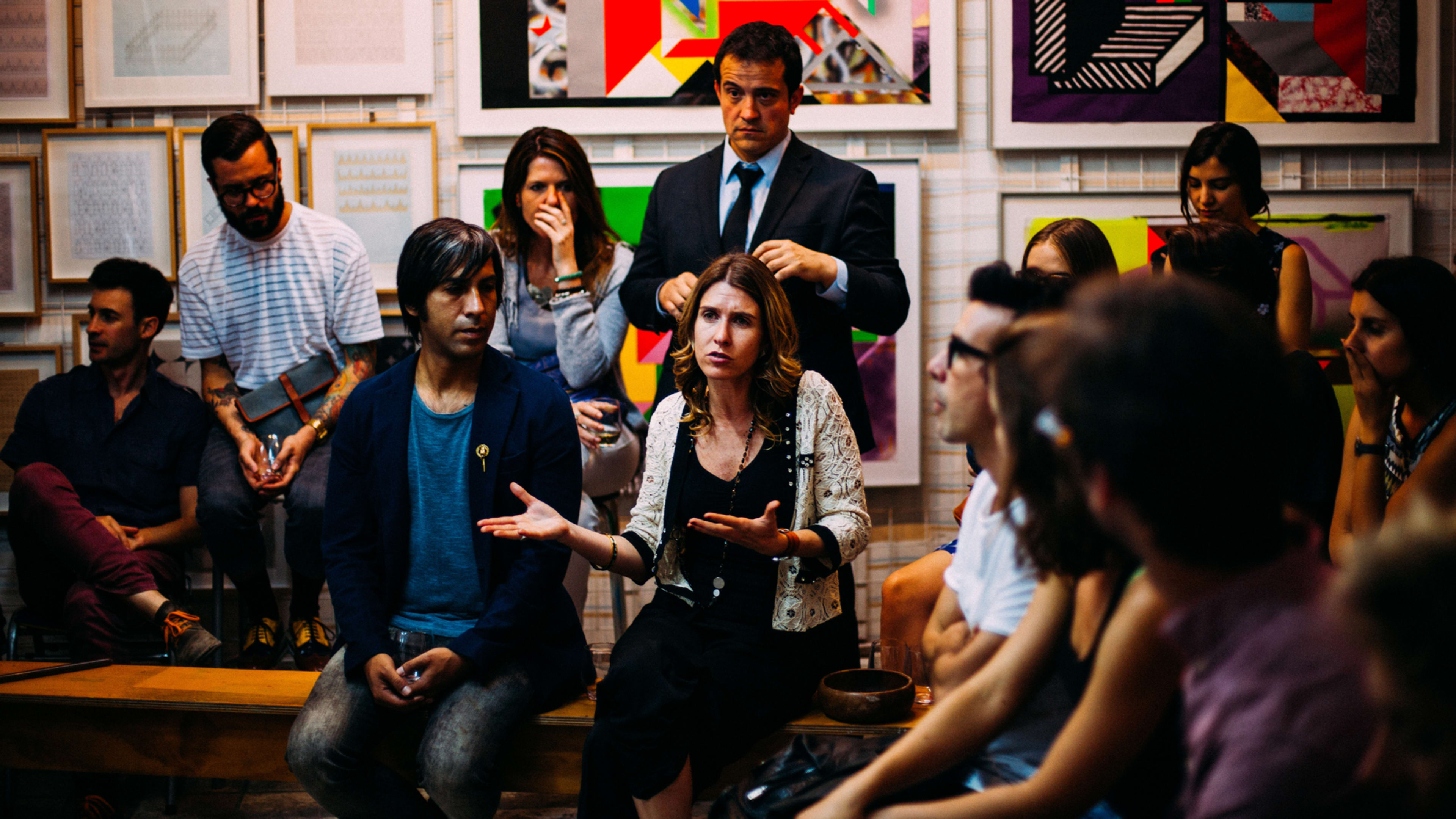Laurie Achin is a master at studying a person’s facial expression, gestures, and body language to pick up the nuances that impact a message other than what’s being said aloud.
Achin is deaf and an American Sign Language faculty member at Northeastern University. She says she catches “the little behaviors, the small movements, the small changes in people’s expressions, body language, and even how the person is saying something” much quicker than hearing people. She can even gauge what a person is feeling and thinking by how they write, drink, walk, and even sit in a chair.
Achin’s skill is extremely important in business interactions, especially as the workplace becomes more remote and virtual. Below, Achin along with Katie Fitzpatrick and Miriam Horwitz–both sign language interpreters–break down the messages sent through nonverbal displays that are volumes louder than what’s actually being said aloud:
What you’re missing: “I understand”
Fitzpatrick, a sign language interpreter and adjunct professor in Beginning ASL to English and Fundamentals of Interpreting and Transliterating at Madonna University, says deaf people are typically better at what linguistics call “backchannel” than hearing people.
In English, backchannels are the “uh-huh-s” and the “hmm-s” that serve to show understanding in what’s being communicated.
Because sign languages read everything from movements (i.e., a question is indicated with your eyebrows) to gaze direction blinks as important cues to determine meaning, backchannels are critical when communicating.
Fitzpatrick says that hearing people don’t think about how important backchannels are so much because we assume the other person understood us because they heard us, despite language being inherently vague. In virtual meetings, representations of your thoughts and ideas might further get complicated and lost in translation, explains Fitzpatrick, so take the time to make sure that people are nodding along to what you’re saying: “It does not mean that they agree with you, but just nodding along to understand and show acknowledgement of what’s being said.”
What you’re missing: “I want to speak now”
Achin says that when someone is trying to speak up or interrupt the current speaker, they’ll become restless in their chair. They may push forward in their body movements and sit up higher in order to get the attention of the current speaker.
However, this can be difficult to see in a virtual group meeting where it’s hard to see participants’ body gestures. In these situations, Fitzpatrick suggests establishing norms ahead of time to encourage communicating. For instance, communicate ahead of time that the speaker will pause for five seconds at the end of each section for feedback and questions. And make sure that each speaker adheres to the established norms. Or consider having a chat feature so participants can send their messages during the meeting without interrupting the speaker.
Horwitz, an ASL and English interpreter, says deaf and hard of hearing people are very aware of what’s in their peripheral vision: “Sometimes they’re not looking at you, but can catch everything that I am interpreting or signing to them.They have such strong peripheral vision, they catch the smaller, more subtle nuances, better than hearing people who can rely on the audible cues that we give one another.”
When leading a meeting, it’s easy to fall prey to tunnel vision, but we can all pick up on a lot more, especially the people trying to interject or make additions, if we scan the room and make sure we’re seeing everyone in our peripheral vision.
What you’re missing: “I need to interrupt you”
Interrupting isn’t usually an advisable conversation style in business interactions, but Horwitz says that the sensitivity to communication access in the deaf and hard of hearing community makes the culture more open to interjections. As a result, she’s noticed that turn-taking tends to be “more forceful” in the deaf community–usually done with a tap on the shoulder or a wave of the hand to attract attention. Horwitz also notices a more collaborative effort in the deaf and hard of hearing community to share the speaking floor. That is, if one person notices another person trying to interject or get the speaker’s attention, they will often point the speaker in their direction. Again, Horwitz points this collaborative effort to the importance of communication access in the deaf and hard of hearing community.
In business meetings, a lesson we can all take from this collaborative effort is to make sure that everyone is heard, especially important if you’re the gatekeeper of the conversation. Many studies have shown that women are interrupted at a much higher level compared to men. As a gatekeeper–whether appointed or because you are part of the majority group–of the conversation, make a note to scan the room, and scan the surroundings to bridge communication and ensure inclusivity.
Pay attention to cues that may signify that someone is frustrated. Achin says she notices shoulders right away. If the shoulders are relaxed, the person is happy. If the shoulders are “scrunched up” to give the body a smaller effect, then Achin concludes the person is nervous or uncomfortable.
Simply put, many of us rely on audio cues to give us direction and share information. However, many of us have also experienced being completely lost after looking down to jot a few quick notes because our visual cues have been restricted. Next time you’re in a meeting, consider testing out your peripheral vision, take in the visual cues that give the most valuable insights, and see if future meetings improve as a result.
Recognize your brand’s excellence by applying to this year’s Brands That Matter Awards before the early-rate deadline, May 3.
